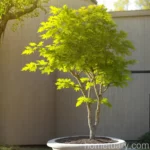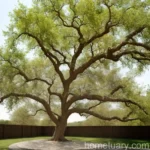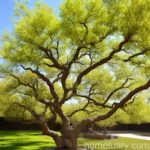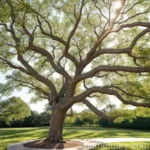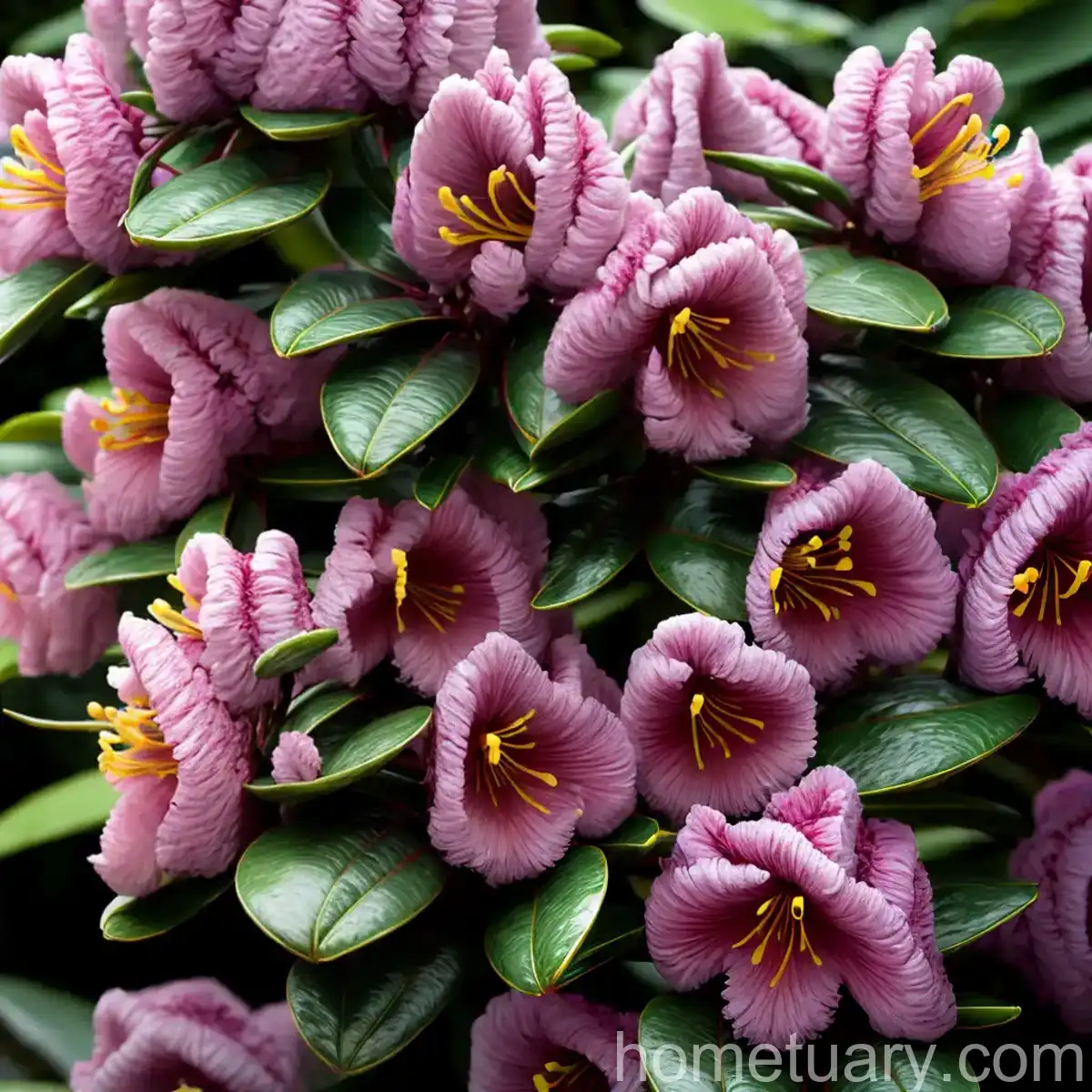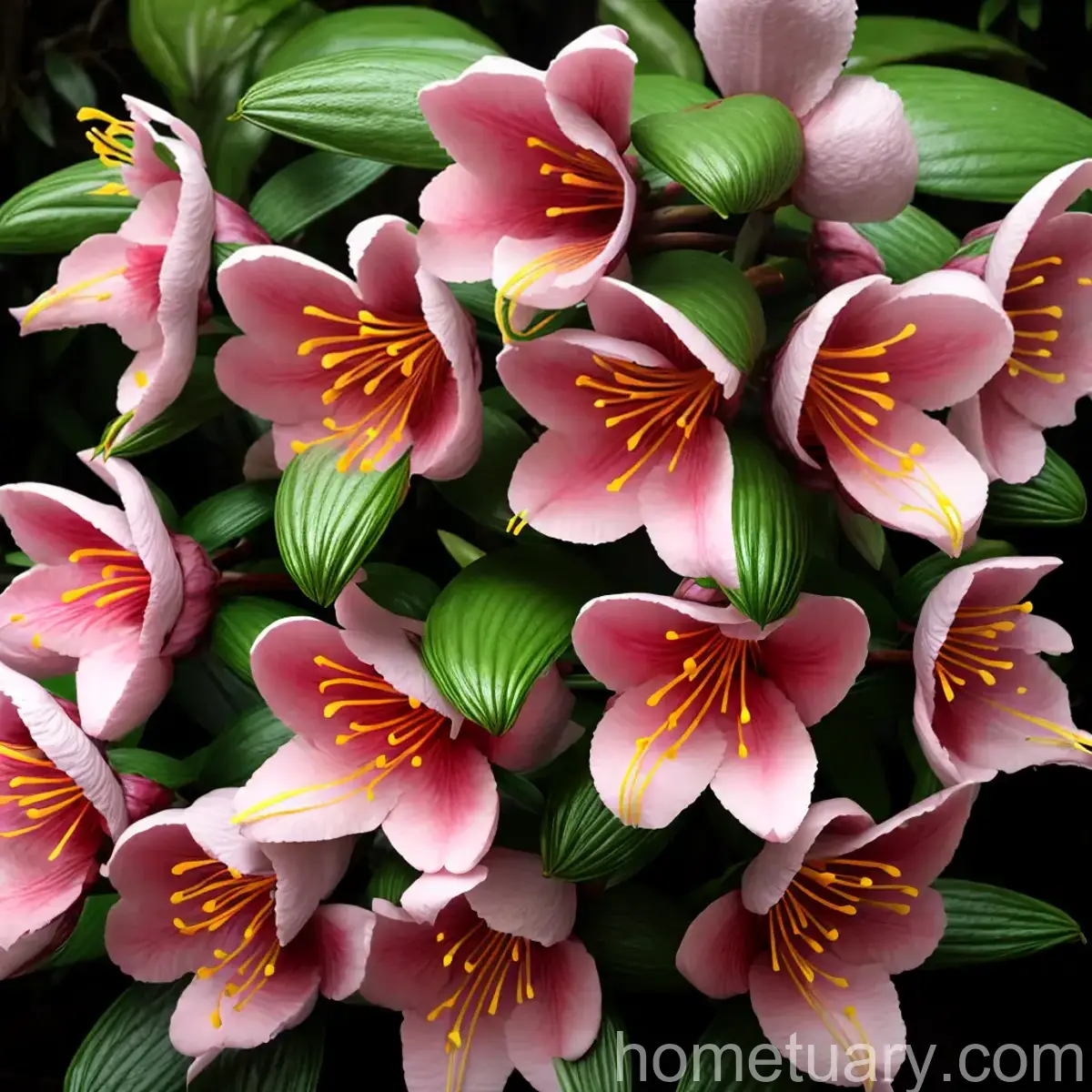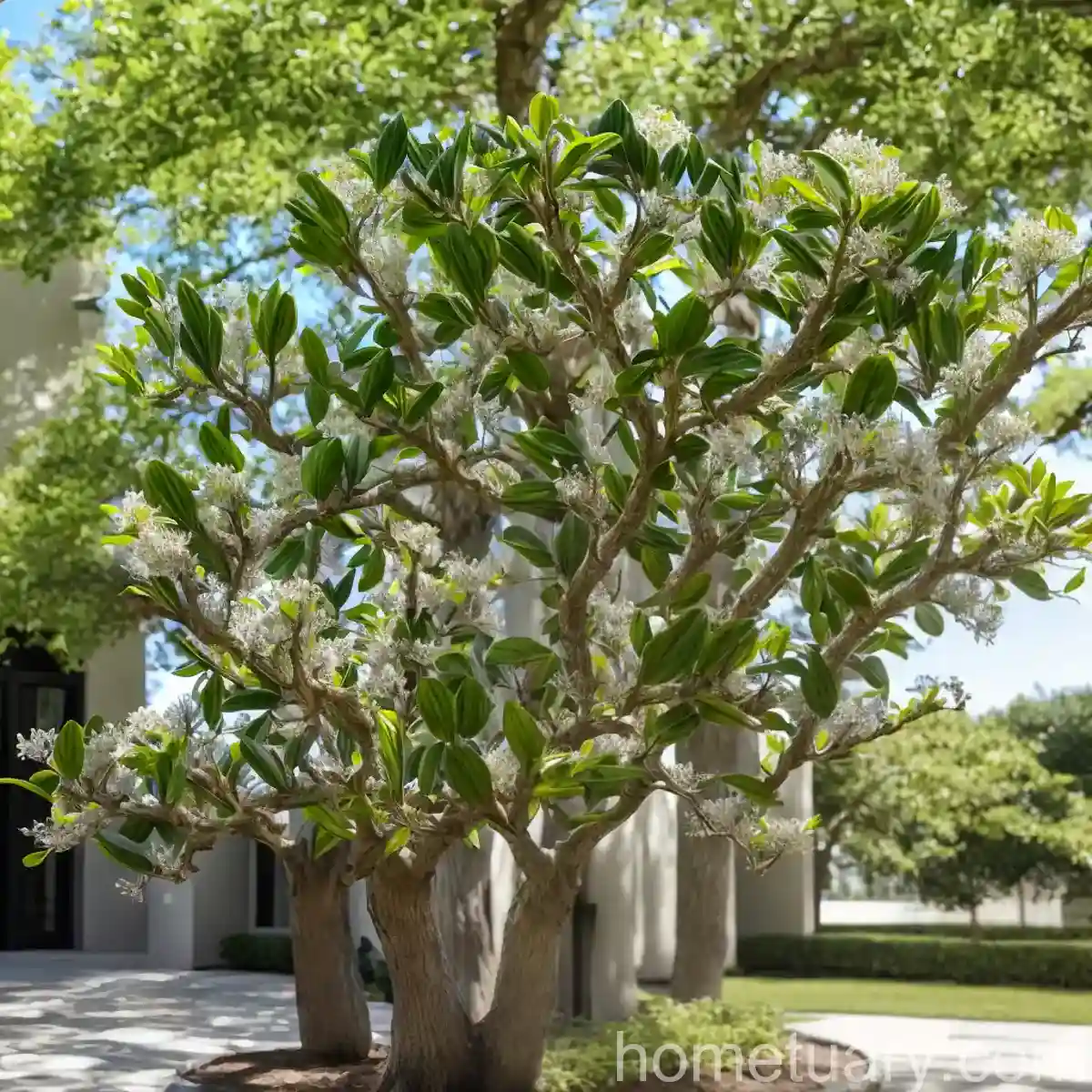The Magnificent Chinkapin Oak (Quercus muehlenbergii)
In the vast and diverse world of trees, the chinkapin oak stands out as a remarkable species. Its scientific name, Quercus muehlenbergii, may not roll off the tongue as easily as some others, but this majestic tree has much to offer. From its ecological importance to its uses in landscaping and medicine, the chinkapin oak is truly a gem of the plant kingdom.
Whether you are a seasoned botanist, an avid gardener, or simply a lover of nature, there is something to captivate everyone in the story of the chinkapin oak. In this comprehensive guide, we will delve into the many facets of this remarkable tree, exploring its characteristics, cultivation, uses, and so much more.
What is the Chinkapin Oak (Quercus muehlenbergii)?
The chinkapin oak, scientifically known as Quercus muehlenbergii, is a species of oak native to the eastern and midwestern regions of the United States. Belonging to the white oak group, this tree exhibits a rugged beauty and resilience that have made it a beloved fixture in its native habitat. The chinkapin oak is known by a variety of common names, including yellow chestnut oak, rock oak, and yellow oak.
Key Takeaways – Chinkapin Oak (Quercus muehlenbergii)
Before we embark on our journey to explore the intricacies of the chinkapin oak, let’s take a moment to highlight the key takeaways about this remarkable tree:
- Scientific Name: Quercus muehlenbergii
- Other Common Names: Chinkapin oak tree, yellow chestnut oak, rock oak, yellow oak
- Habitat: Eastern and midwestern regions of the United States
- Characteristics: Rugged beauty, belonging to the white oak group
- Uses: Landscaping, medicine, wildlife habitat
- Ecological Importance: Supporting diverse wildlife and contributing to forest ecosystems
Culture
Understanding the ideal growing conditions and cultural requirements of the chinkapin oak is fundamental to its successful cultivation. From soil preferences to sunlight requirements, every aspect of the tree’s culture plays a crucial role in its overall health and vigor.
Water
The chinkapin oak is known for its remarkable tolerance to drought conditions. Once established, this tree can thrive in moderately dry soil and is relatively drought-resistant. However, during the initial establishment phase and prolonged periods of drought, supplemental watering can be beneficial for the tree’s growth and overall well-being.
Sunlight
In its natural habitat, the chinkapin oak is often found growing in open woodlands and on the edges of forests, indicating its preference for abundant sunlight. When planting a chinkapin oak, select a location that provides full sun to partial shade for optimal growth and development.
Fertilizer
Due to its adaptability to various soil conditions, the chinkapin oak typically does not require heavy fertilization. However, if the tree is exhibiting signs of nutrient deficiency or is growing in poor soil, a balanced fertilizer can be applied in early spring to support its growth.
Soil
The chinkapin oak thrives in a range of soil types, including sandy, loamy, and clay soils. It prefers well-drained soil and can tolerate occasional flooding, making it a versatile species for various landscape settings. While the tree is adaptable to different pH levels, a slightly acidic to neutral soil pH is generally ideal for optimal growth.
Pruning
Pruning is an essential practice in maintaining the health and form of the chinkapin oak. Proper pruning techniques can help remove dead or diseased branches, shape the tree’s canopy, and promote better air circulation within the foliage. When pruning the chinkapin oak, follow these guidelines:
- Timing: Prune the tree during its dormant season, preferably in late winter to early spring, to minimize stress and promote efficient healing.
- Tools: Use sharp, clean pruning tools to make precise cuts without causing unnecessary damage to the tree.
- Techniques: Focus on removing dead, damaged, or crossing branches, and avoid excessive pruning that can compromise the tree’s natural form and structure.
- Caution: Take care to avoid over-pruning, particularly in the first few years of the tree’s growth, to allow for robust and balanced development.
Propagation
Propagation of the chinkapin oak can be achieved through various methods, including seeds, cuttings, and grafting. While seed propagation is the most common technique for expanding the tree’s population, propagation through cuttings and grafting can be utilized to maintain specific traits and characteristics of select cultivars.
Seed Propagation
Propagation from seeds is a straightforward and natural method for producing new chinkapin oak trees. Follow these steps to propagate the chinkapin oak from seeds:
- Seed Collection: Harvest mature acorns from healthy chinkapin oak trees in the fall when they are fully developed and have turned brown.
- Preparation: Remove the caps from the acorns and wash them to remove any remaining debris.
- Stratification: Store the acorns in a moist, cool environment for a few months to simulate the natural cold stratification process that triggers germination.
- Planting: Plant the stratified acorns in individual containers or directly in the ground in the early spring, providing them with adequate moisture and sunlight for germination and growth.
Container Popularity
The chinkapin oak’s adaptability and stunning appearance make it a popular choice for container planting in various urban and suburban settings. Whether adorning patios, walkways, or outdoor living spaces, container-grown chinkapin oaks bring a touch of natural beauty and sophistication to any environment.
Container Planting Tips
When selecting a chinkapin oak for container planting, consider the following tips to ensure its success in a confined growing space:
- Container Size: Choose a large, sturdy container with ample drainage holes to accommodate the tree’s root system and to prevent waterlogged soil.
- Soil: Use well-draining, nutrient-rich potting mix to provide the tree with essential nutrients and adequate aeration.
- Watering: Monitor the moisture levels in the container and water the tree as needed, ensuring that the soil does not dry out completely.
- Sunlight: Place the container in a location that receives ample sunlight, as chinkapin oaks thrive in full sun to partial shade conditions.
Common Diseases
While the chinkapin oak is known for its resilience and disease resistance, it is not immune to certain fungal infections and other diseases that can affect its health. Understanding the common diseases that may afflict the chinkapin oak is essential for early detection and effective management.
Disease Diagnosis
Recognizing the symptoms of common diseases is key to diagnosing and treating issues promptly. Keep an eye out for the following signs of potential diseases in chinkapin oaks:
- Powdery Mildew: White powdery spots on leaves, typically most prevalent in humid conditions.
- Anthracnose: Dark, irregular lesions on leaves, often leading to defoliation and twig dieback.
- Oak Wilt: Rapid wilting and browning of leaves, particularly during the growing season.
- Root Rot: Stunted growth, yellowing leaves, and decay of the tree’s root system.
Disease Management
Implementing proper cultural practices and timely intervention can help manage and prevent common diseases in chinkapin oaks:
- Pruning: Regularly remove dead or diseased branches to promote air circulation and reduce the risk of fungal infections.
- Avoid Overhead Watering: Minimize leaf wetness by watering the tree at the base and during the morning hours to allow foliage to dry before nightfall.
- Fungicidal Treatments: In severe cases, applying approved fungicidal treatments can help control the spread of certain diseases and protect the tree from further infection.
Common Pests
In addition to diseases, chinkapin oaks are susceptible to attacks from various pests that can compromise their health and vigor. Being vigilant about pest management and early detection is crucial in preserving the tree’s vitality.
Most Common Pests
Keep a lookout for these common pests that may target chinkapin oaks:
- Gypsy Moth: Larvae can defoliate trees, leading to stress and potential decline in overall health.
- Oak Leafroller: Larvae feed on foliage, causing damage and impacting the tree’s ability to photosynthesize.
- Oak Leafminers: These pests create winding tunnels in leaves, affecting the tree’s aesthetic appeal and potentially weakening its vigor.
- Scale Insects: These pests can sap the tree’s energy by feeding on its sap, leading to yellowing and depletion of foliage.
Integrated Pest Management
Employing integrated pest management (IPM) practices can help mitigate pest pressures and maintain the health of chinkapin oak trees:
- Biological Controls: Encourage natural predators and parasites of pests to keep their populations in check.
- Sanitation: Regularly remove and destroy infested leaves and branches to prevent the spread of pests and diseases.
- Horticultural Oils: Application of horticultural oils can suffocate certain pests and disrupt their life cycles, reducing their impact on the tree.
Botanist’s Tips
To truly appreciate and cultivate the chinkapin oak to its fullest potential, consider these tips from seasoned botanists and arborists:
- Selecting the Right Cultivar: When choosing a chinkapin oak for your landscape, consider specific cultivars that exhibit desirable traits such as improved fall color, disease resistance, or compact growth habit.
- Mulching Matters: Apply a layer of organic mulch around the base of the tree to conserve moisture, suppress weed growth, and provide a gradual release of nutrients to the soil as it decomposes.
- Observation and Care: Regularly inspect your chinkapin oak for any signs of stress, disease, or pest infestation, and intervene promptly to address any issues.
Fun Facts
To add a touch of intrigue to your knowledge of the chinkapin oak, here are some fascinating and fun facts about this remarkable tree:
- Chinkapin oak wood is highly valued for its strength, durability, and attractive grain, making it a sought-after material for furniture, flooring, and woodworking projects.
- The acorns of the chinkapin oak serve as an important food source for various wildlife species, including deer, squirrels, and birds, contributing to the tree’s ecological significance.
- Chinkapin oaks are often planted as part of reforestation and reclamation efforts due to their ability to adapt to challenging environmental conditions and support diverse ecosystems.
Links to External Resources
For further exploration and in-depth information about the chinkapin oak, consider consulting the following reputable resources:
- USDA Plants Database
- The Morton Arboretum – Quercus muehlenbergii
- Lady Bird Johnson Wildflower Center – Quercus muehlenbergii
The chinkapin oak stands as a testament to the resilience and adaptability of nature’s wonders. Through its rugged beauty, ecological significance, and valuable contributions to landscapes and ecosystems, this remarkable tree continues to enrich our natural world and captivate the hearts and minds of plant enthusiasts and conservationists alike. Embrace the allure of the chinkapin oak and discover the enduring legacy of this iconic species in the tapestry of forests and woodlands across the United States.




